Anyone who followed our blog last year may remember that we were stalked by a particularly noisy bird called a Scops Owl that kept me awake for many a night with its monotonous, night long, squawking. We picked him up in Greece and finally didn’t shake him off until we were in Slovakia.
On the Banranald RSPB reserve, where we have stayed an extra day, we have met his British equivalent, the Corncrake. This very rare bird has its stronghold on this reserve and our campsite is smack in the middle of the breeding area. One of the bird’s characteristics, other than being very difficult to spot, is that the male makes a load, metallic, croaking noise, which he starts at dusk and keeps up all night long. Fortunately he is not quite as loud as the Scop’s Owl, but when I woke up in the night I thought he was giving at good try!
Sorry that this is turning into an ornithology blog, but we are on an RSPB reserve at the moment and nearly everyone has binoculars slung round their necks and my birding lens has a distinct inferiority complex next to some of my fellow campers’.
In the morning we tried to book for another night on site, only to first be told there were no spaces and then half an hour later that the was a space, but we would have to move. So we moved a few yards, for no great purpose, but with our view improved over a lovely wild flower meadow. It was overcast and very windy in the morning, requiring fleeces and coats, but by midday it was clear blue skies, but with a 20mph wind coming straight off the sea, it was not warm.
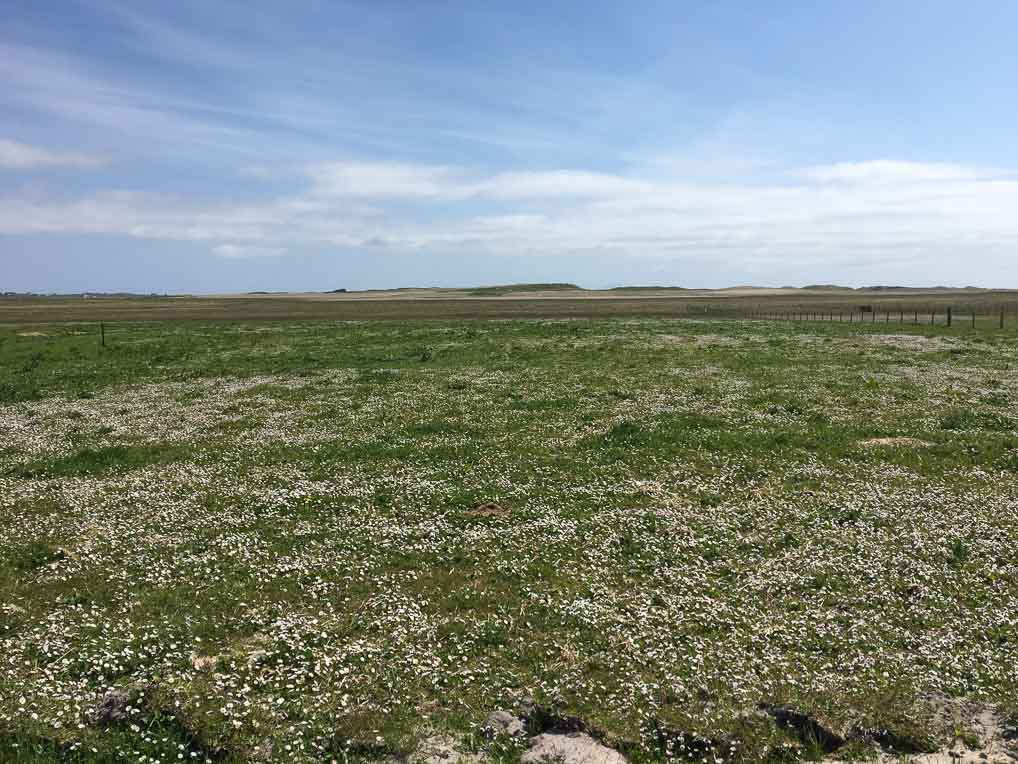
The machair in front of Basil’s window
I had some luck this morning when I went round to the RSPB centre in, what I thought would be, a vain attempt to see a Corncrake. I had hardly arrived when I heard the characteristic croak from a male bird and there, only 10 metres or so from me I saw a male Corncrake’s head. It quickly hid again and skulked off into the undergrowth, but I had seen my quarry. Next time he stuck his head up I was able to take a couple of shots, before he disappeared for good! Six hours later I also managed to capture a Corn Bunting, the other rarity on the reserve, sitting on a barbed wire fence only about 15 metres from Basil.

The elusive Corncrake
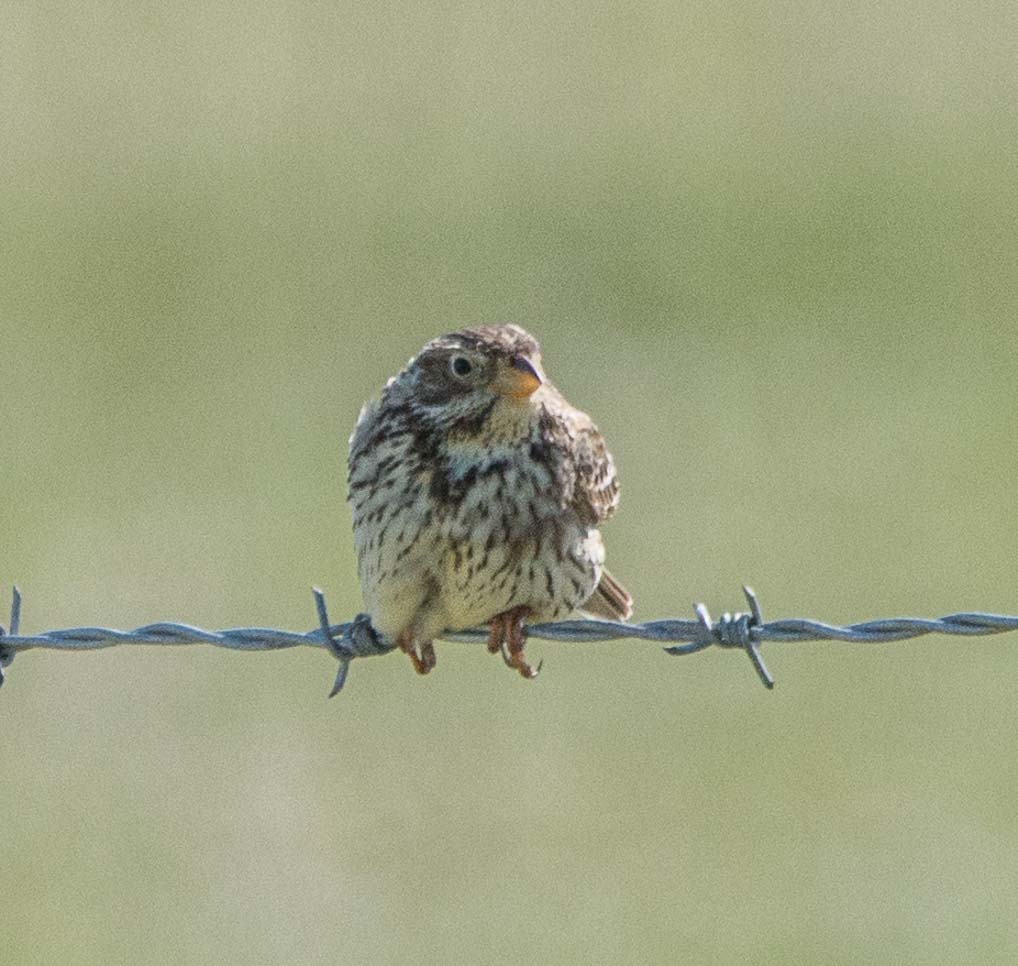
Corn Bunting
One of the beautiful things about the Outer Hebrides, and one of the things that attracts all the wildlife is what is called the Machair. This is the rich sandy grasslands which lie behind the sand dunes in this part of the world. They are covered in wild flowers, and traditional farming methods, now encouraged by the RSPB and others, have allowed wildlife, which has disappeared from much of Britain, to hang on here.
Sarah managed to get our first clothes wash for two weeks, completed. With the wind howling across the site everything was dry within and hour, and more importantly it all stayed on the line, just.
Sarah and I had another walk out onto the nature reserve, with Sarah taking the dogs on a walk along a long sandy beach while I was left behind, like the sad man I am, with my binoculars and birding lens, staring intently at various waders on the shoreline.

Beach, where Sarah walked in the background, and seaweed where I watched waders in the foreground!
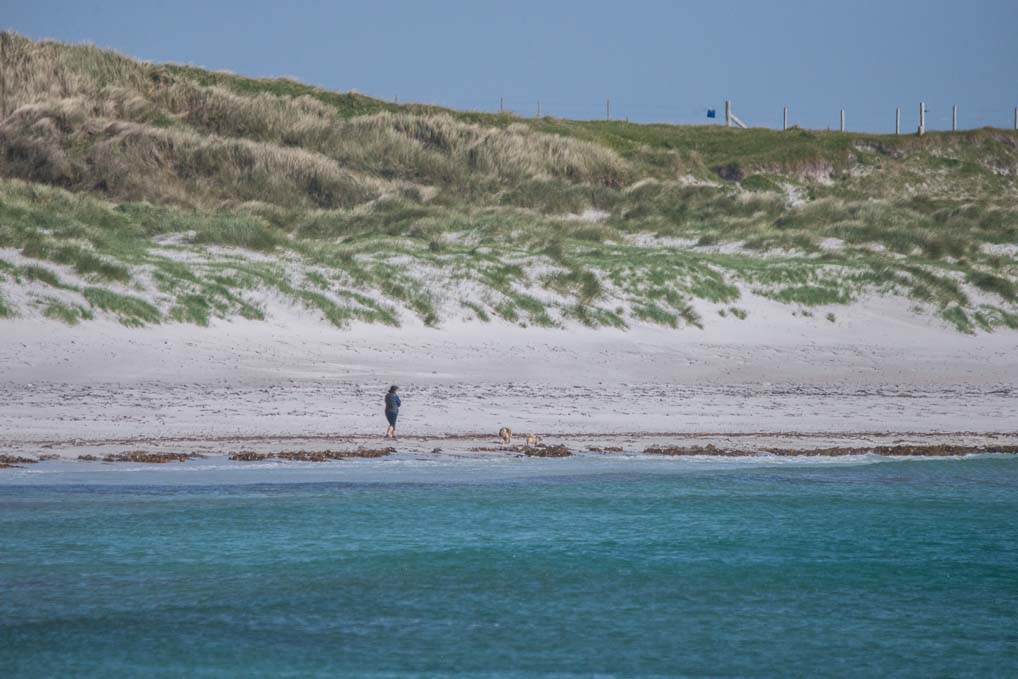
Sarah on her walk, through the birding lens!
Tomorrow the weather looks even better, so we are heading down to South Uist and we have booked into a campsite on a sandy beach for two days. We have no idea whether we will have connectivity.

Lesser Black Backed Gull
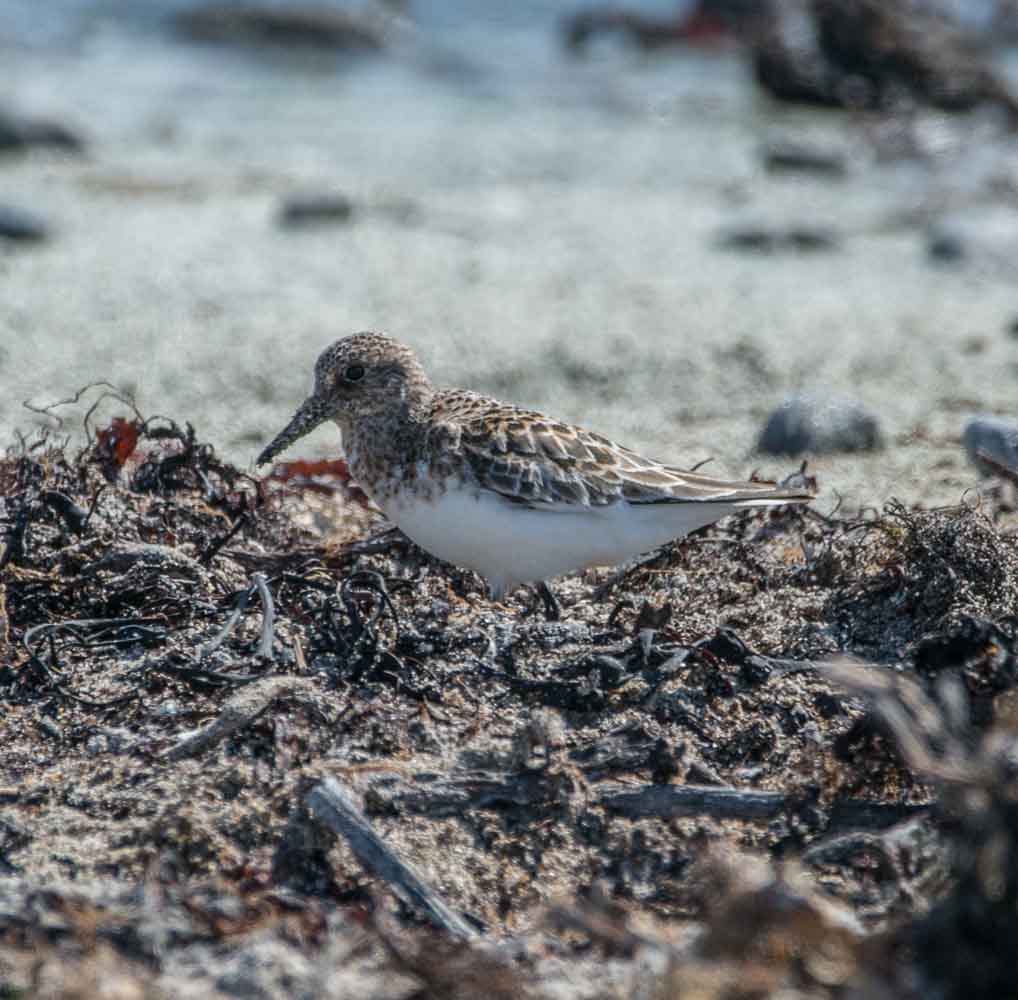
Unidentified Wader !

Dunlin having a bath

Turnstone – again.
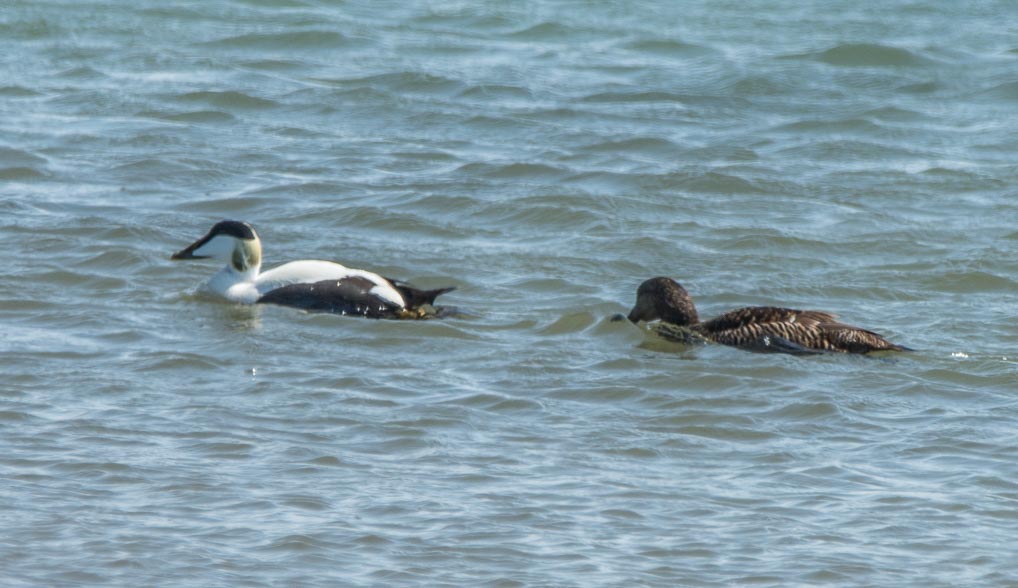
Pair of Eider Ducks
